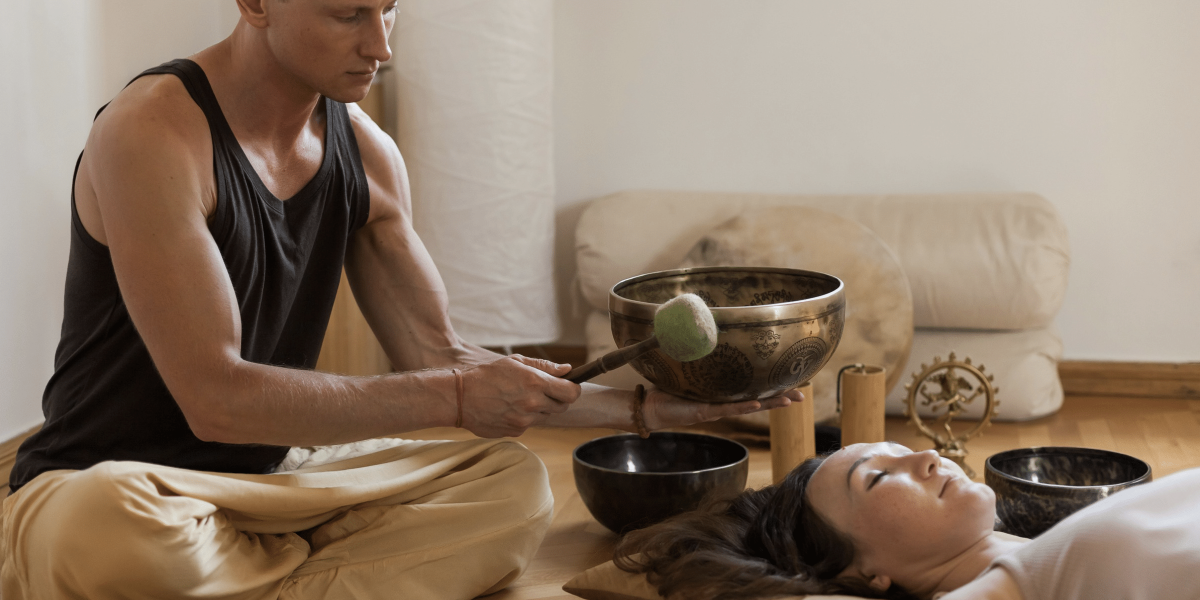What Is Sound Immersion, and Why Is It Gaining Attention?
Sound immersion refers to the practice of using sound, tones, and vibrations to encourage relaxation and well-being. This approach involves engaging with specific sound frequencies and rhythms designed to create a calming environment for both the body and mind. Proponents suggest that sound immersion provides a gentle, sensory-driven way to manage stress and foster emotional balance.
Unlike casual music listening, sound immersion often incorporates specialized tools like Tibetan singing bowls, crystal bowls, gongs, or tuning forks. These instruments produce resonant tones that many people find soothing and meditative. While sound immersion may not replace other wellness techniques, it offers a complementary path for those looking to explore new methods of relaxation.
Research suggests that sound-based therapies can influence physiological responses such as brain activity, heart rate, and stress levels. However, experts emphasize that more scientific studies are needed to fully understand the benefits and mechanisms of sound immersion. Still, many participants report feeling calmer and more centered after sessions, highlighting its potential as a supportive wellness practice.
How Does Sound Affect the Body and Mind?
Sound immersion builds on the idea that sound and vibration can interact with the human body. Scientific findings suggest that exposure to specific sound frequencies may help promote relaxation by influencing brainwave activity. This phenomenon, called brainwave entrainment, occurs when external rhythmic sounds encourage the brain to shift from high-alert beta waves to calmer alpha or theta waves, which are linked to relaxation and meditation.
The physical effects of sound immersion can also be significant. Vibrations generated by sound-producing instruments may help reduce muscle tension and encourage a state of physical relaxation. Some studies even suggest that sound exposure could influence stress hormone levels, though the effects can vary from person to person.
It’s important to note that while sound immersion is sometimes described as therapeutic, it should not be seen as a cure or substitute for medical treatment. Wellness professionals suggest that it may be a helpful addition to self-care routines, supporting relaxation and stress relief when used alongside other approaches.
What Makes Sound Immersion Different From Other Wellness Practices?
Sound immersion differs from traditional wellness practices like meditation or yoga in its use of external sound as the guiding element. While meditation often focuses on internal stillness and concentration, sound immersion uses vibrations and auditory stimuli to lead participants toward a relaxed state. This can make it more accessible for those who find traditional mindfulness practices challenging.
The sensory nature of sound immersion sets it apart. Participants often describe feeling “enveloped” by the sound, as though it creates a cocoon of tranquility. Instruments like gongs or crystal bowls produce vibrations that can sometimes be felt physically, adding another layer to the experience. For some, these physical sensations are grounding and help deepen their relaxation.
Unlike practices that require significant skill or effort, sound immersion is passive. Participants simply lie down or sit comfortably while listening to the sounds. This ease of participation has contributed to its appeal, especially for individuals new to wellness practices or those seeking non-strenuous ways to unwind.
Why Is Sound Immersion Growing in Popularity?
The rising interest in sound immersion reflects an increasing emphasis on holistic approaches to well-being. As people explore ways to manage stress, improve focus, or enhance their emotional health, sound immersion offers a low-barrier entry point into wellness practices. Its inclusive nature—requiring no prior experience or physical exertion—makes it accessible to a wide audience.
Another factor driving its popularity is the versatility of sound immersion. Sessions can be tailored to individual needs, from stress reduction to relaxation, and even for aiding sleep. Additionally, the communal aspect of sound baths—where participants share the experience in a tranquil setting—adds a sense of connection, which can also support emotional well-being.
Emerging research on the benefits of sound in therapeutic contexts is also contributing to its growth. While findings are still developing, some studies suggest that sound-based practices may reduce anxiety, promote relaxation, and support mental clarity. However, wellness professionals advise against viewing sound immersion as a definitive solution, suggesting it as a component of a broader self-care approach instead.
How Can Someone Experience Sound Immersion?
Sound immersion can be experienced in a variety of ways. Facilitated sessions, often held in wellness centers, yoga studios, or specialized sound therapy spaces, are guided by trained practitioners who use instruments to produce calming sounds and vibrations. These sessions typically last 30 to 60 minutes, during which participants are encouraged to relax, listen, and allow the sounds to wash over them.
For those unable to attend in-person sessions, at-home sound immersion is an option. Instruments such as singing bowls or tuning forks can be purchased for personal use, and many online platforms offer recorded soundscapes designed to replicate the immersive experience. Experts recommend starting with guided sessions to learn about the practice before experimenting independently.
Creating the right environment is key to a successful sound immersion experience. A quiet, comfortable space free from distractions enhances the effectiveness of the sounds. Many practitioners suggest using low lighting, soft seating or mats, and headphones (if listening to recordings) to create a space conducive to relaxation.
Is Sound Immersion Right for Everyone?
While many people find sound immersion beneficial, it may not be ideal for everyone. Some individuals are highly sensitive to sound and may find certain tones overstimulating or unpleasant. Additionally, those with specific health conditions, such as sound-induced seizures or certain types of hearing sensitivities, should approach sound immersion cautiously and consult a healthcare provider if unsure.
It’s also important to set realistic expectations. While sound immersion may help reduce stress or improve focus, it is not a standalone treatment for mental health conditions or chronic stress. Wellness practitioners recommend integrating sound immersion with other strategies, such as physical activity, mindfulness, or therapy, for a well-rounded approach to health.
What Role Might Sound Immersion Play in Future Wellness Trends?
Sound immersion is increasingly being recognized as a gentle, accessible option for promoting relaxation and well-being. As interest in holistic wellness continues to grow, this practice may become a more prominent offering in spas, wellness retreats, and even workplace wellness programs.
Its appeal lies in its versatility and inclusivity. Whether experienced in a communal sound bath or a private home setting, sound immersion offers a low-effort way to explore the connection between sound and well-being. As awareness of the mind-body connection grows, sound immersion could serve as a valuable tool for those seeking non-invasive methods to enhance their quality of life.
While its full potential is still being explored, sound immersion already holds a unique place in wellness practices. Its ability to soothe the mind and body simultaneously makes it a compelling choice for anyone looking to carve out moments of peace in their busy lives. For those curious about incorporating sound immersion into their routine, it offers a gentle yet impactful way to foster balance and relaxation.







